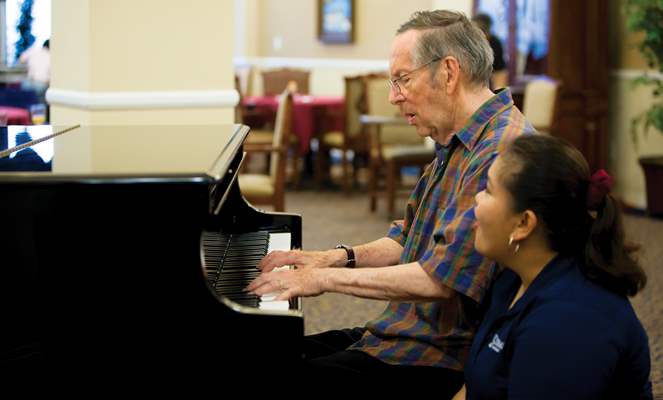Music and Hospice
April 17, 2019

How music therapy is changing lives at the end of life
“Music therapy is the clinical and evidence-based use of music interventions to accomplish individualized goals within a therapeutic relationship by a credentialed professional who has completed an approved music therapy program.”
– American Music Therapy Association (2019)
In Silverado hospice, music therapists work as part of the psych-social team. When a patient is initially enters hospice, they are automatically referred for music therapy. A discussion with the patient’s POA follows to briefly explain the goals of music therapy and what to expect, as well as an assessment of the patient’s and family’s music history. This gives us an opportunity to gain insight into the type of connection they have to music. For example, they might be skilled in playing an instrument, have sang in a choir, or have a preferred genre or a song tied to positive memories.
If the POA agrees to pursue music therapy, we meet with the patient to conduct an in-person music assessment. During this assessment, we look for various indications to see if music therapy would be appropriate for them, including levels of engagement, enjoyment, reminiscence and if they display any noticeable decreases in pain. If we decide that music therapy would beneficial for the patient, we add them to our caseload and see them routinely once or twice a month.
Each patient is given a unique and individualized goal we aim to achieve through music therapy. Some of the more common goals you will see in our music therapy program are pain and anxiety management; pre-bereavement with patients and families; increasing quality of life through engagement or reminiscence; decreasing loneliness or agitation; and cognitive stimulation. We refer to the patient for their preference on live or recorded music to address these goals through various means. These can include playing an instrument, guided relaxation, singing a song together, dancing or songwriting. Throughout the music therapy program, we are constantly monitoring progress and re-assessing the patient to ensure that they are on the right path towards the goal we have set. This practice is very similar to that of nurses regularly assessing patients to make sure they reach their clinical goals.
